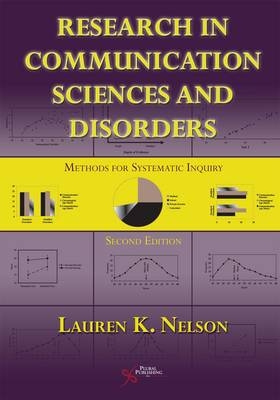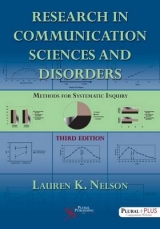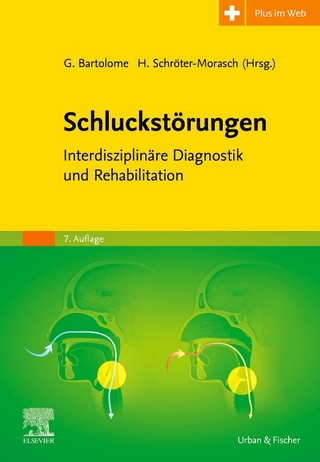
Research in Communication Sciences and Disorders
Plural Publishing Inc (Verlag)
978-1-59756-491-5 (ISBN)
- Titel erscheint in neuer Auflage
- Artikel merken
This popular text, now in its second edition, arose from the author's inability to find a textbook that fully met her or her students' needs! Overly comprehensive texts generate blank faces, while excessively concise texts fail to fully meet the need for an effective depth of learning. This text achieves a great balance between depth of coverage and readability, but balance is not the only reason this book is needed. Reflecting the movement toward evidence-based practice in audiology and speech-language pathology, the author has ensured that the concepts associated with evidence-based practice are integrated throughout the chapters (not just added as a separate chapter or course segment). Also included are features that help students be more active in learning the material. Each chapter has a set of review questions or case scenarios that can be used as homework, as probe questions in class, or as group activities. Importantly, the author has included lists of supplemental readings from the research literature in the field. The second edition has been updated with new references and resources throughout.The chapter on research ethics was expanded to include broader coverage of responsible conduct of research and the impact of HIPAA.
Additional information reflecting current practices in evidence-based practice has been added to the chapters on research questions, research design, statistics, and reporting research. The author has added two cases studies designed to promote discussion to the chapters on research ethics and quantitative research design. Tables illustrating example studies from communication sciences and disorders journals have been added to the chapters on nonexperimental and experimental design, and the coverage of qualitative research designs has been expanded. Chapter 10 now includes a section on preparing a review of literature. With its many added features and updated, enhanced content, Research in Communication Sciences and Disorders: Methods for Systematic Inquiry, is the ideal textbook for research-related courses.
Lauren Nelson, Ph.D. Lauren K. Nelson, Ph.D., is an associate professor in the Department of Communication Sciences and Disorders at the University of Northern Iowa (UNI). Since coming to UNI in 1990, she has regularly taught courses in phonetics, articulation and phonological disorders, research methods, and augmentative communication. Her educational background includes a Bachelor of Science degree from Northern Michigan University and a Master of Arts from Central Michigan University. After working for two years in an Iowa area education agency, she returned to school and completed her Ph.D. studies at Memphis State University (now University of Memphis).
Contents Preface Chapter 1. Empirical and Nonempirical Research: An Overview Systematic Inquiry Some Roles for Research Types of Research Variables Getting Started with Research Summary Chapter 2. Ethical Considerations Protection of Human Participants Special Protections Historical Perspective Institutional Review Boards Research Integrity Avoiding Conflicts of Interest Credit for Intellectual Effort Attribution of Ideas Accuracy in Reporting Information Data Management Confidentiality and Privacy Health Insurance Portability and Accountability Act Summary Appendix 2 - 1: Research Scenario Chapter 3. Identifying and Formulating Research Questions Identifying Important Questions Formulating Research Questions Ways to Formulate a Research Problem Evidence-Based Practice Questions Criteria for Well-Formed Questions Establishing Validity and Reliability Summary Chapter 4. Completing a Literature Search Purposes of a Literature Search Planning and Conducting a Search Search Tools Designing a Search Strategy Organizing and Documenting Your Literature Search Summary Appendix 4 - 1: Electronic Literature Search Chapter 5. Nonexperimental Research Design Nonexperimental Research Designs Survey Research Case Studies Longitudinal Research Correlation and Regression Group Comparisons Causal-Comparative Research Qualitative Research Ethnography Grounded Theory Case Study Phenomenology Conversation Analysis Scientific Rigor in Qualitative Research Summary Chapter 6. Experimental Research and Levels of Evidence Experimental Research Designs Posttest-Only Designs Pretest-Posttest Randomized Control Group Design Solomon Randomized Four-Group Design Switching Replications Design Factorial Designs Importance of Experimental Control History Maturation Statistical Regression Instrumentation Selection Mortality Quasi-Experimental Approaches Nonequivalent Control Group Designs Repeated Measures Group Design Single Subject Designs Experimental Designs and Levels of Evidence Summary Appendix 6 - 1: Research Scenario Chapter 7. Research Participants and Sampling Populations and Samples Sample Characteristics Sampling Methods Simple Random Sampling Systematic Sampling Stratified Random Sampling Cluster Sampling Purposive Sampling Random Assignment Sample Size Summary Chapter 8. Data Analysis: Describing Different Types of Data Levels of Measurement Visual Representation of Data Descriptive Statistics Frequencies and Percentages Measures of Central Tendency Measures of Variability Shapes of Distributions Summary Chapter 9. Data Analysis: Inferential Statistics Inferential Statistics Measures of Association Pearson Product-Moment Correlation Coefficient Coefficient of Determination Spearman Rank-Order Correlation Chi Square and Contingency Coefficient Simple Regression and Multiple Regression Testing for Differences Between Two Samples Independent and Paired t-Tests Mann-Whitney U Sign Test and Wilcoxin Matched-Pairs Signed-Ranks Test Testing for Differences among Three or More Samples Statistical Analysis for Factorial Designs Additional Tools for Analyzing Clinical Data Caution in the Use and Reporting of Statistics Summary Chapter 10. Research Outcomes: Clinical Guidance, Research Reports Knowledge Base for Evaluating Clinical Research Critical Appraisal How Applicable Are the Findings Reporting Research Findings Components of a Research Report More on the Review of Literature Writing Guidelines and Writing Style Disseminating Research Findings Summary Index
| Erscheint lt. Verlag | 1.10.2012 |
|---|---|
| Zusatzinfo | b/w illustrations |
| Verlagsort | San Diego |
| Sprache | englisch |
| Maße | 178 x 254 mm |
| Gewicht | 431 g |
| Themenwelt | Medizin / Pharmazie ► Gesundheitsfachberufe ► Logopädie |
| Medizin / Pharmazie ► Gesundheitswesen | |
| ISBN-10 | 1-59756-491-5 / 1597564915 |
| ISBN-13 | 978-1-59756-491-5 / 9781597564915 |
| Zustand | Neuware |
| Informationen gemäß Produktsicherheitsverordnung (GPSR) | |
| Haben Sie eine Frage zum Produkt? |
aus dem Bereich



